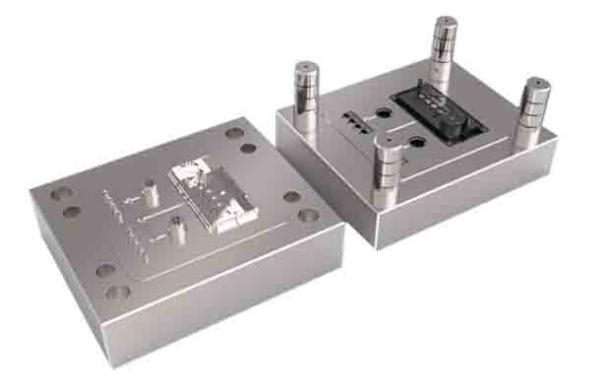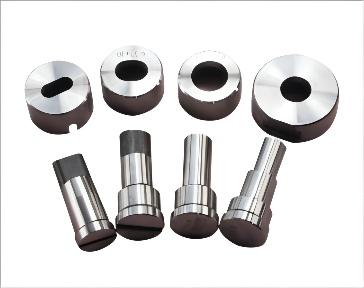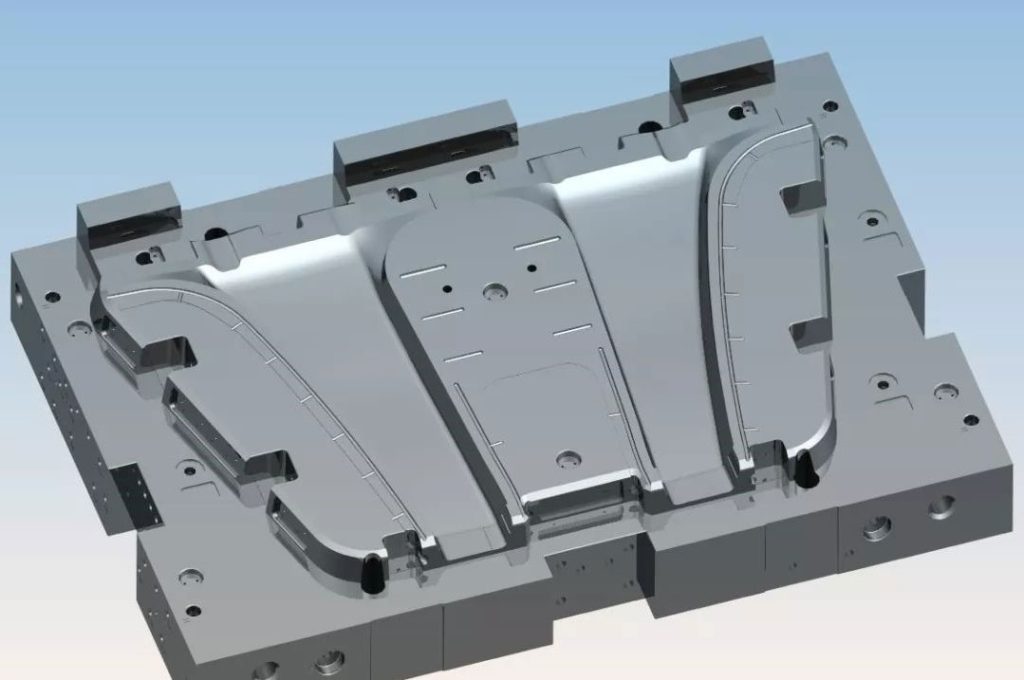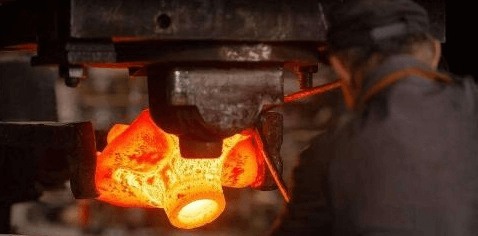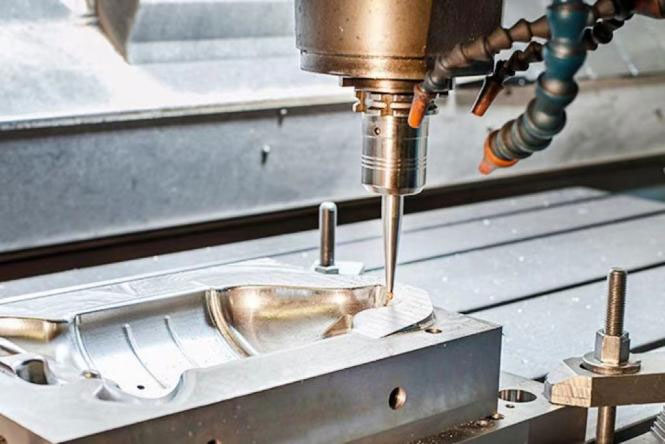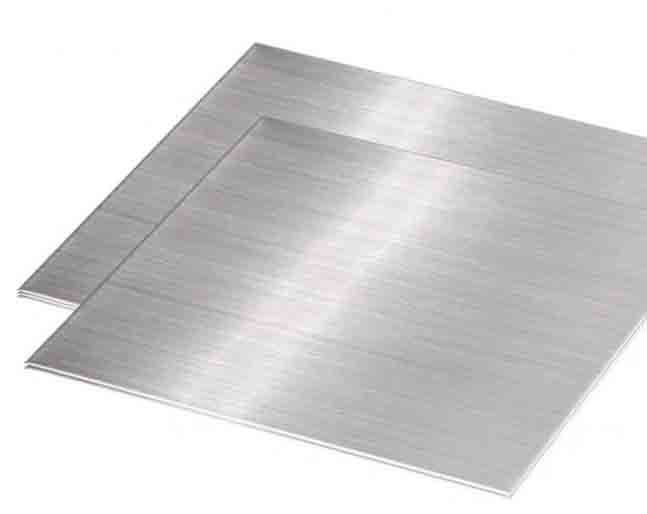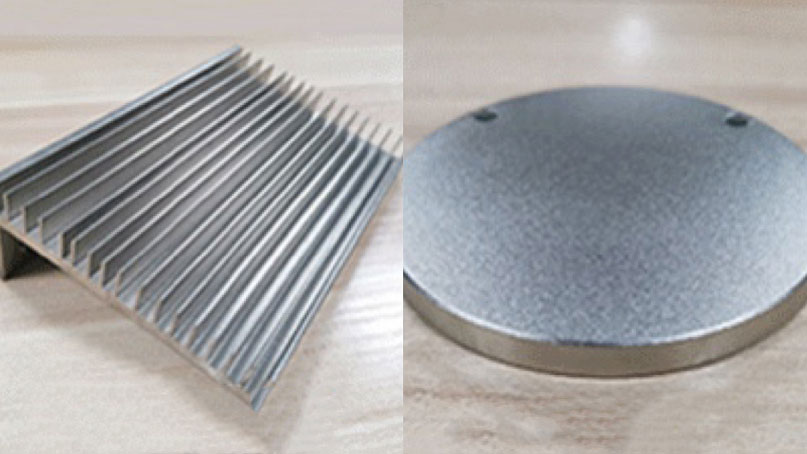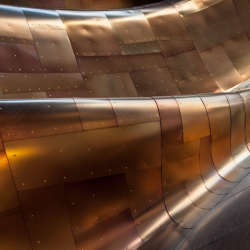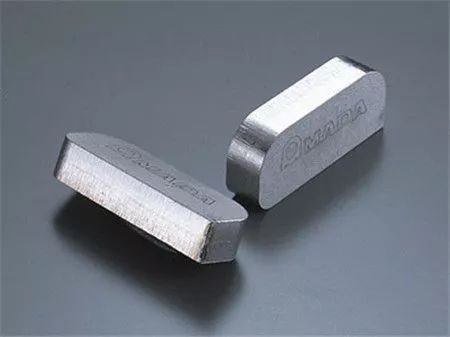This article will introduce the commonly used mold surface finishing technology from three aspects: physical surface finishing method, chemical surface finishing method, and surface coating finishing method.
A Brief Introduction to the Mold
Molds are various molds or tools used in industrial production to obtain the desired products through injection molding, blow molding, die casting or forging, smelting, stamping, and other methods. A mold is a tool used to make a shaped item. The mold is composed of various parts, and it mainly realizes the processing of the shape of the object through the change of the physical state of the material to be formed.
The mold makes the blank have a specific shape and size through the action of external force. It is widely used in extrusion, pressure casting, powder metallurgy parts pressing, and the compression molding or injection molding of ceramics, rubber, and other products.

Surface Finishing Process and Mold
In modern production, molds are widely used. As important process equipment, mold is essential for the production of various industrial products. With the development of many industries, such as aerospace and automobile manufacturing, the requirements for mold processing technology are getting higher and higher. In the field of mold manufacturing, surface finishing technology is widely used. Through the surface finishing process, the deficiencies in the mold material can be made up so that the mold tends to develop in a more diversified direction.
In the mold surface finishing process, the material properties of the mold can be changed by physical, chemical, surface coating methods, etc. The surface material and performance of the mold can be greatly improved. The application of various surface finishing technologies can change the mold surface layer’s performance, composition, and structure, thereby achieving a substantial improvement and optimization of the mold surface performance. For example, the friction performance, heat insulation performance, mold release performance, wear resistance, hardness, and seizure resistance of the mold are enhanced, and the oxidation resistance and corrosion resistance are improved. The service life of the mold can be greatly improved. Surface finishing technology is of great significance for reducing mold production costs, improving quality levels, and extending service life. At the same time, it also promotes the improvement of production efficiency and gives full play to the potential of mold materials.
Commonly Used Mold Surface Finishing Process
1. Physical Surface Finishing
The physical surface treatment method we call mainly has three aspects: high-frequency surface quenching, surface coating technology, and flame surface quenching.
- High-Frequency Quenching
High-frequency quenching refers to placing a mold in an alternating magnetic field and letting the alternating magnetic field heat the mold. After the quenching used in the surface treatment technology, the surface of the mold has higher hardness, which is 2-3HRC higher than that of general quenching, and is relatively brittle, which significantly improves the fatigue strength of the mold.
High-frequency quenching is mostly used for surface quenching of industrial metal parts. It is a metal heat treatment method that generates a certain induced current on the surface of the workpiece, rapidly heats the part’s surface, and then rapidly quenches it. Induction hardening is not suitable for molds with complex shapes.
- Surface Coating Technology
The surface coating technology mainly uses the properties of the external coating to process the mold.
- Flame Surface Quenching Process
Flame surface quenching is a heat treatment process in which a flame of mixed combustion of acetylene and oxygen is sprayed onto the surface of the part so that the part is rapidly heated to the quenching temperature. Then water is immediately sprayed onto the surface of the part. Flame surface quenching is suitable for single-piece or small-batch production, large-scale medium-carbon steel, and medium-carbon alloy steel parts that require hard and wear-resistant surfaces and can withstand impact loads.
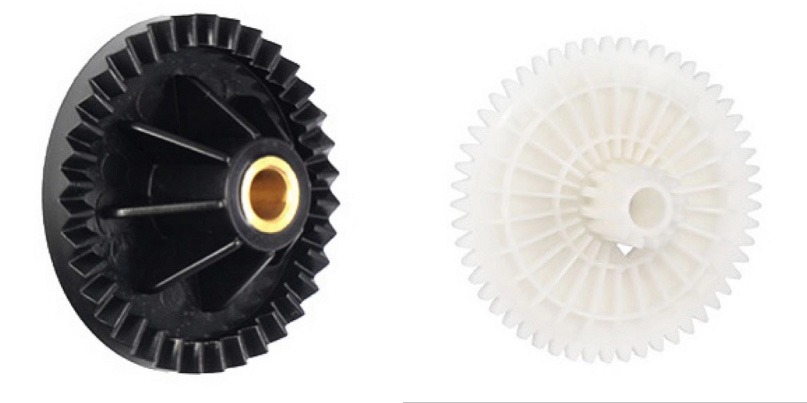
2. Chemical Surface Finishing
The chemical surface finishing method means that to meet the technical requirements and improve the performance of the mold surface layer, the mold is placed in an active medium with a certain temperature for heat preservation, and one or more elements are infiltrated into the mold surface. The purpose is to change the chemical structure and composition of the mold surface.
It penetrates into different elements according to the surface to improve the wear resistance and corrosion resistance of the mold surface. The chemical surface finishing methods are distinguished by the element types infiltrated into the surface layer, usually boronizing, nitriding, carburizing, carbonitriding, vanadium infiltrating, aluminizing, etc. The corrosion resistance, wear resistance, oxidation resistance, and fatigue resistance of the mold surface can be greatly improved by chemical surface finishing.
- Boronizing
There are many boronizing methods, such as salt bath boronizing, solid boronizing and gas boronizing. The international treatment methods are more common with solid boronizing and salt bath boronizing.
Boronizing is mainly used for wear resistance and certain corrosion resistance. The boronizing process improves surface hardness and wear resistance, and improves heat resistance and corrosion resistance.
- Carburization
Most of the low carbon steel or low alloy steel adopts the carburizing process. The carburizing process is mainly to make the surface layer of the workpiece have high hardness and wear resistance. In contrast, the central part of the workpiece still maintains the toughness and plasticity of low carbon steel. The lower grade material replaces the higher material by carburizing and quenching. Therefore, based on ensuring the quality of the mold material, the manufacturing cost is reduced.
The carburizing process is suitable for molds that are subjected to large impact loads or severe wear at the same time. However, the carburizing process is unsuitable for molds requiring higher precision. Because the temperature in the carburizing operation is relatively high, heat treatment is needed after carburizing, which will lead to large deformation of the mold.
- Nitriding
Nitrogen can form a benign surface through the requirements of different machining workpieces and penetrate into the mold quenching process. The anti-seizure, heat resistance, corrosion resistance, fatigue resistance, and wear resistance of the mold have reached a high level through the nitriding process. Compared with the carburizing process, the ammonia infiltration temperature is relatively much lower, about 500 ~ 600°C. Therefore, the deformation range of the mold in the ammonia infiltration treatment is small, which can greatly improve the overall quality of the mold.
Due to the high cost, long operation time, and complex process of nitriding process, it is usually used in molds with high requirements on heat resistance, precision, and wear resistance.
The speed of the infiltration treatment method is relatively fast, the deformation capacity of the mold is relatively small, and it has high wear resistance, which can greatly improve the service life of the mold.
- Nitrocarburizing
Nitrocarburizing refers to the chemical treatment of nitrogen and carbon deep into the surface of the mold. Nitrocarburizing is usually divided into liquid carbonitriding and gas carbonitriding. The advantages of carbonitriding treatment technology are that it has faster treatment speed, smaller mold deformation, higher anti-adhesion and wear resistance, and can also improve mold life.
3. Surface Coating Treatment Method
(1) The metal element vapor or gas is introduced into the ionization chamber by the method of ion implantation so that it is ionized into positive ions and accelerated by the high-voltage power plant so that the positive ions can be embedded into the solid at high speed. Ion implantation can improve the mechanical properties of the mold surface and enhance the wear resistance of the mold.
(2) The thermal spraying of the cermet coating on the mold by thermal spraying technology can improve the impact resistance, adhesion resistance, hardness, and other capabilities.
(3) The operating temperature of the electroplating surface treatment method is lower, which makes the deformation of the mold smaller and does not affect the mold’s performance.
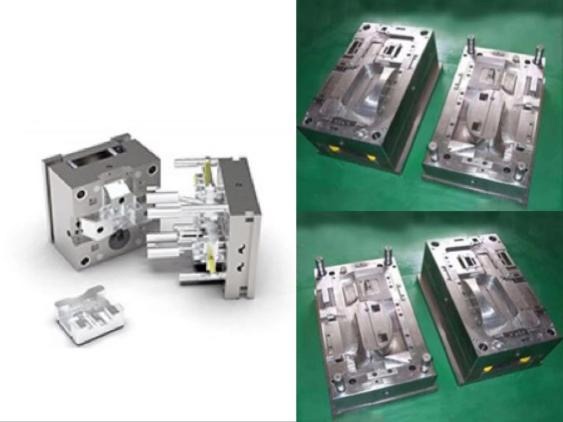
Conclusion
JTR offers a variety of surface finishing technologies and is a professional manufacturer dedicated to providing high-quality rapid prototyping and mass manufacturing services. If you want to know about related technologies or have related needs, please feel free to contact us.


